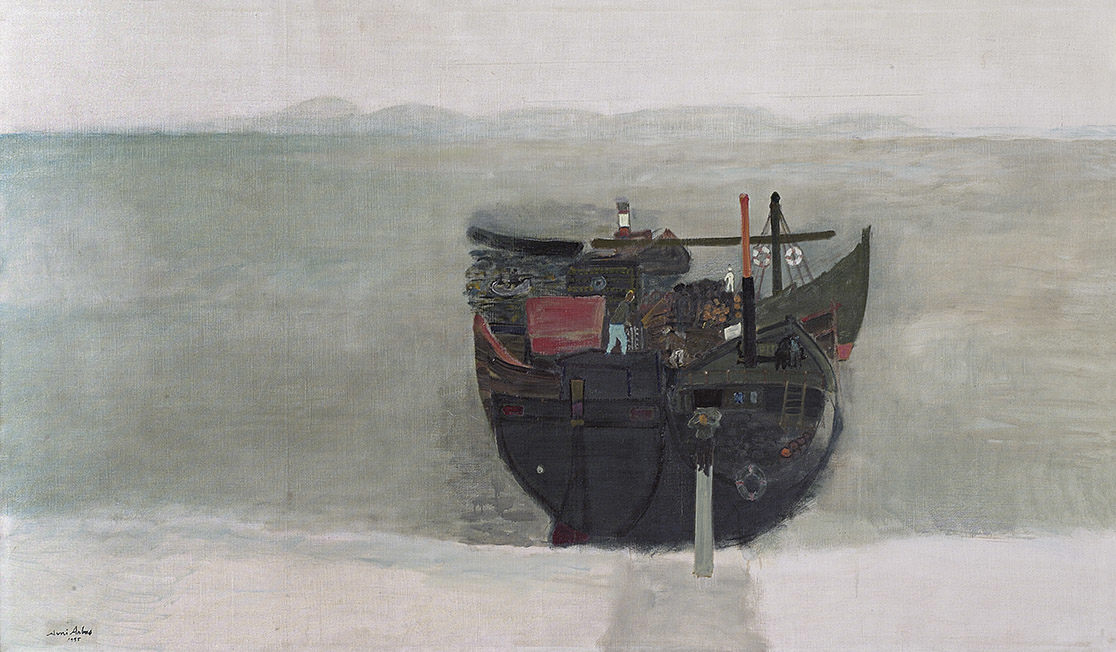- Open Today: 10.00–18.00
- Ticket
- Shop
- Membership
- TR EN

Avni Arbaş, 1919-2003
Boat, 1955
Avni Arbaş studied under Léopold Lévy at the Academy of Fine Arts from 1940 to 1946 and was one of the founding members of the Yeniler Grubu (Newcomers Group). Shortly after graduating, he received a grant from the French government to go to Paris, where he spent the next thirty years and mounted a number of solo shows. In 1977 he returned to Turkey, where he continued to work on his paintings.
During his time in Paris, Arbaş studied prominent art movements of the period, but rather than adopting any of these, he created his own visual language. He was not particularly interested in innovation and destruction, preferring instead to investigate the continuous and self-renewing lines of painting. Arbaş used a spare language, dissolving his forms with color stains and divesting the figure of detail—an approach somewhere between abstract and figurative. For most of his paintings, Arbaş chose an element that was significant to him at that point in his life and used it as a motif. He did not paint the figure in front of him, but rather images impressed on his memory as color and light. He turned his perceptions into a work of art through interpretation. For Arbaş, painting was about “shapes, shadows and even stains, and not about reflecting exactly what you see onto the canvas.”
“Boat” depicts an image of a boat that was stamped on the artist’s memory, along with the light, sea, and fog surrounding it. He represents the boat as a living being, independent of its geography. In this way, Arbaş dissolves sharp boundaries, removing the boat and ship from their contexts and placing them within an undefined space in such a way as to create a sense of infinity. The figures appear almost as stains on the canvas—impressions with blurred contours.
Painting
Oil on canvas
Dr. Nejat F. Eczacıbaşı Foundation Collection
Istanbul Museum of Modern Art / Long-term loan